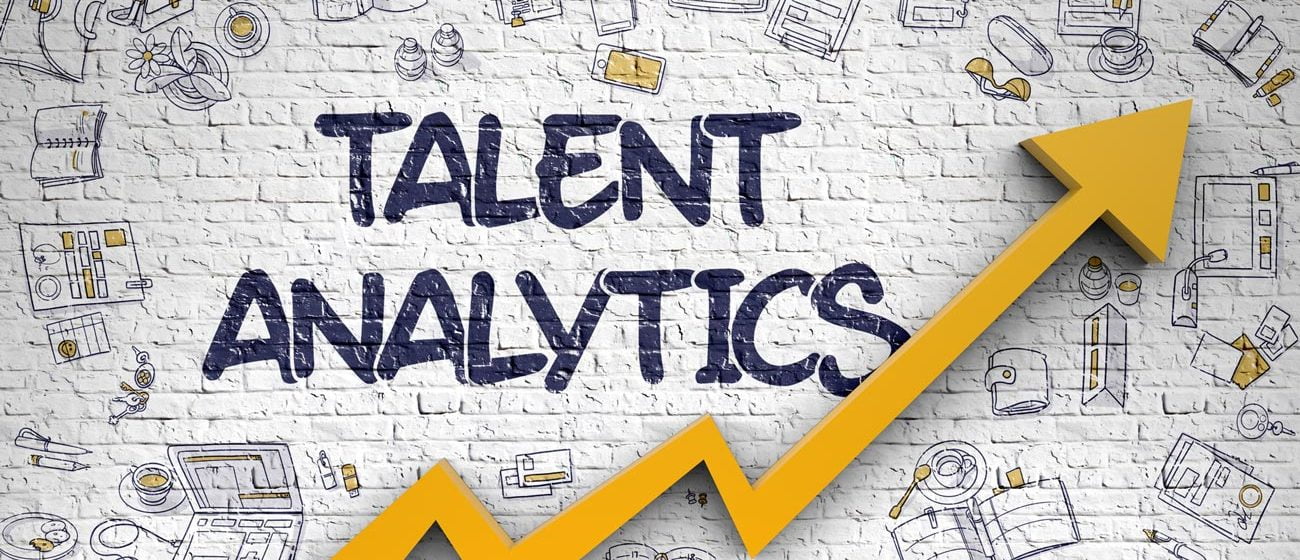There is nothing that can boost your business better than a great hire. Finding someone who fits in your organization, is energetic, and inspires those around him does wonders for a company both in morale and revenue.
But how do you find those great hires?
Is it luck? Good karma? Most likely, neither one. Data analytics in HR can find the missing information that helps organizations identify and find that exemplary employee.
Talent analytics, if you are not familiar, is a set of data gathered on your employees on several metrics such as education, years of experience, skills, attitudes, and performance. Some of the data is just factual and gathered from background, but other data comes from skill assessments and surveys. This data can inform HR professionals of what it takes to be successful at your company.
Improving retention rates is the top reason employers have turned to talent analytics to help inform their decisions, according to a study by CareerBuilder. More than half – 56 percent – of employers use data to increase retention, the study showed. Other reasons included identifying skill gaps, building better job offers, and finding out what candidates want.
In hiring, data can be gathered on applicants that will serve as the first layer of information to select which candidates to consider for a position.
Data or talent analytics is becoming more used across industries, from retail to banking to manufacturing. According to a PriceWaterhouse Coopers’ CEO survey, 50 percent of CEOs use talent analytics to help in hiring and retaining good employees.
There are many ways talent analytics can improve your company’s hiring process. Following are just a few examples of how data can make hiring smoother so you can focus on bigger, more strategic goals.
Predict Top Performers with HR Analytics
Have you ever wondered why someone who seems like a great fit and an outstanding hire ends up being a “meh” employee? Looking at data can help you identify top performers in your organization, and what sets them apart from the average. Data will show you if these key players have similarities: education, skill sets, managers, years in the business.
But what you may assume makes a top employee may not be true.
A Deloitte study on sales performance and recruiting in the insurance industry showed that looking for high grade point averages or top-tier university attendance from an applicant does not correlate with future sales performance. And that same study found that what does make the difference in sales for banking and manufacturing employees is the employees’ personal networks, how well they communicate inside the company, and the amount of time spent with customers.
So data can dispel some myths or unsubstantiated beliefs about what it takes to make the A team in sales. Once you learn the similarities between these great workers, you can strategically design your outreach to them.
Find Your Ideal Candidate in the Wild
Part of the hunt for great workers is to go where they gather. If your company’s talent acquisition professionals typically use conferences and networking events, for example, to find candidates, you may need to expand to more digital methods such as LinkedIn or job boards. And if employee referrals or promoting in-house are not bringing in the diversity you need, data will show you where your diverse hires are found, so you can devote more resources in that direction.
Predictive analytics can pinpoint where your ideal candidate lives and spends time, to target ads or outreach. This data can also help you choose language in job ads to attract the ideal employee.
Fight Unconscious Bias in Talent Acquisition
That candidate with a great background you didn’t hire because deep down you thought she kind of resembled your evil sister-in-law? She went on to lead another company and double its revenue. Some choices HR professionals make are actually filled with biases they don’t even know they have. Data has no biases. It just gives you the numbers and mirrors back what works and what doesn’t. Data has never even met your sister-in-law.
Josh Millet, founder and CEO of Criteria Corp., which helps companies with hiring, said clients come to him to drive better diversity in their hiring. Millet said working with data rather than a hunch can lead to much better results.
“There is a growing perception that some of the legacy parts of the hiring process, like resumes and unstructured interviews, really do insert unconscious biases into the process,” Millet said in a recent podcast. He said if you think about what a resume is, it’s a combination of two things: education and a list of experience. Research shows definitively that the amount of experience and level of education are not all that predictive of job performance.
“They are what statisticians call ‘a weak signal,’” he said.
Make a Solid Offer
Maybe you are finding and interviewing great workers, but your offers are being turned down. Data will show you where the problem lies. If you are paying market rates, and salary isn’t the problem, knowing more about your ideal candidate can strengthen the offer you make. For example, if you know a potential new hire is a fitness enthusiast, you can tailor your offer to include gym membership as an employee benefit.
Data can show you the common values and behaviors of your ideal employees. Millennials often cite equity, transparency, purpose, and flexibility as their top priorities in a company. If you are having trouble attracting or retaining employees in that age group, data will show you where to focus to make your company more attractive to them.
There is also a new set of expectations job seekers have a post-COVID19 pandemic, specifically more remote working options and flexibility. With all the uncertainty and rapid change around the world, workers know that employers have to be responsive to physical and mental health concerns as well. How you approach these hot-button topics can make the difference between accepted and rejected offers.
Data Analytics Save Time
For some companies, hiring never ends. It is an ongoing process in high-turnover positions such as sales and customer service. Rather than trying to wholly change the system, many companies will focus on retention, for example, stretching the average tenure of an employee out by three months. Having an employee stay even an extra quarter can save your company money in the long run.
Data can also analyze your time-to-hire information and reveal how well you are using your time and money. For example, you can look at the average time it takes to hire someone in a specific type of position and measure that against your track record. Are you taking too long? Are you using agencies or job boards that are slow-moving? Perhaps it’s your vetting process that could use a revamp. Drawing that vetting system out for high turnover roles can cost you more than time.
Case study: how a financial services company saved six hours of time a week with Employee Cycle.

Sign up today for a free demo of our HR analytics dashboard software.
Your HR data should be delivering you awareness on your company workforce and policies to bring in top-performing talent. If it’s not, a dashboard will help you manage all your metrics in one place and translate that data into actionable insights that improve your hiring process. Sign up today for a free demo of our HR analytics dashboard software.












